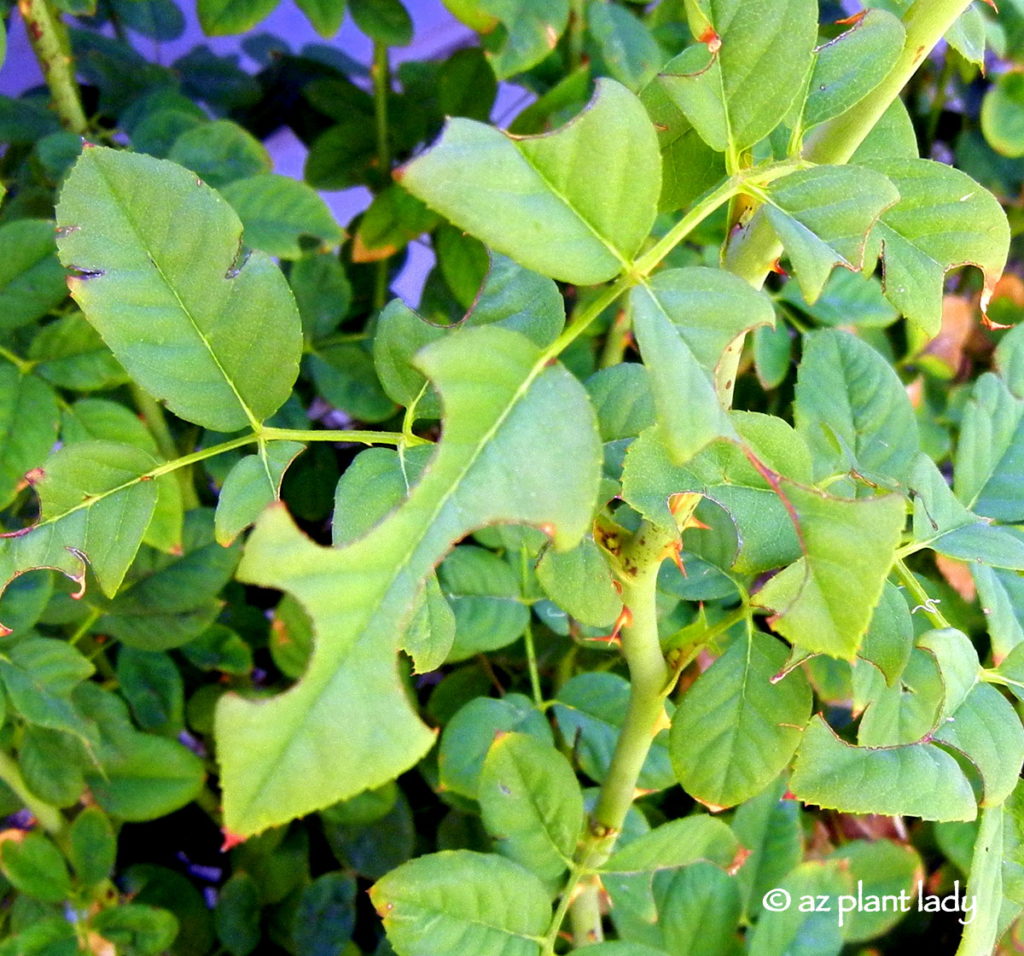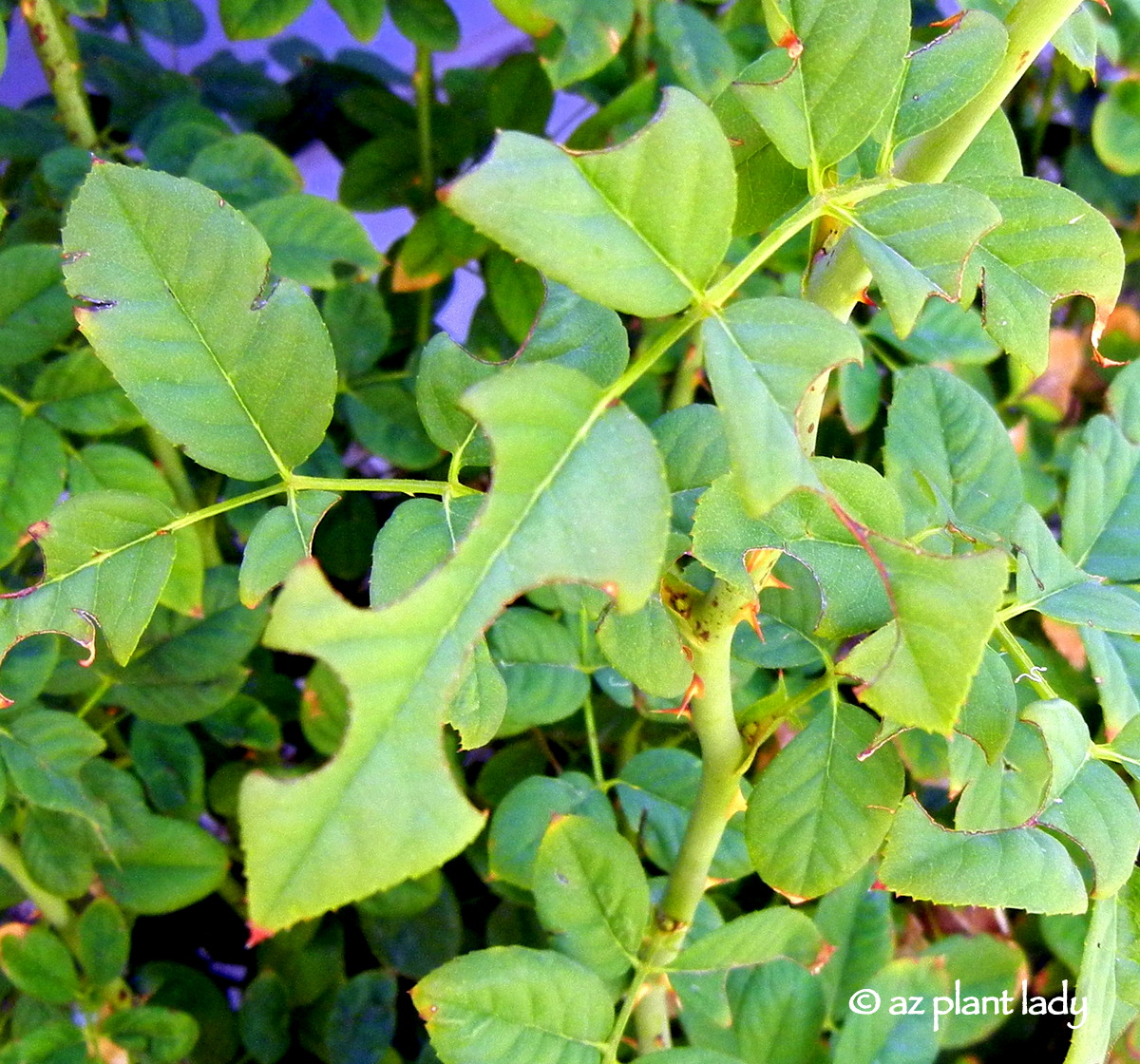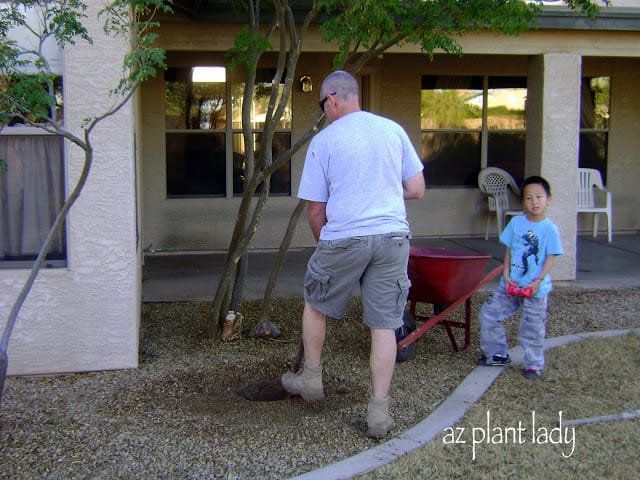What’s Chewing On My Leaves?
Have you ever noticed circular areas missing from your leaves? If so, you aren’t alone. The other day I noticed several of my plants with neat semi-circular sections missing. But, was I worried? Nope, and I’ll tell you why in my latest garden video.
The Enigmatic Damage to Leaves
A Puzzling Leaf Discovery
Noelle: Hey there, fellow garden enthusiasts! Today, we’re diving into a bit of a mystery. As I was strolling through my garden, I couldn’t help but notice something quite peculiar – several of my plant leaves had neat, semi-circular sections missing. Now, I know this might raise some alarms for many gardeners, but fear not, for I’m here to share some insights and reassure you that it’s not as ominous as it might seem.
Noelle: First things first, let’s take a closer look at these mysterious leaf patterns. You can see here on this rosebush, there’s a semi-circular chunk missing from one of the leaves. And over here on this hibiscus, another one. So, what’s going on? Is it some nefarious garden pest?
The Twist in the Tale of Leaves
Noelle: Well, here’s the twist – it’s not a pest at all! In fact, this leaf damage is quite natural and not something to fret over.
You see, the culprits behind these neat, semi-circular holes are none other than the remarkable leafcutter bees. Leafcutter bees are a type of solitary bee, and they are truly fantastic pollinators. What might appear as leaf vandalism is, in fact, a vital part of their unique nesting process.
Leafcutter bees utilize these semi-circular leaf sections to construct their nests. If you take a closer look, you might even spot some of these leaf sections tucked away in the nooks and crannies of your garden.

The Precision of Leafcutter Bees
Meticulous Craftsmen
Noelle: Leafcutter bees are known for their precision. They cut these perfect curves from the edges of leaves, and they’re surprisingly meticulous about it. The remarkable thing is that these bees aren’t interested in damaging your plants; they’re simply striving to build a safe and cozy space for their offspring.
Beneficial Garden Partners
Noelle: Now, here’s the best part – these bees are great for your garden! As they visit your plants to collect nectar and pollen, they’re inadvertently pollinating your flowers. This pollination process is an essential aspect of maintaining a healthy garden ecosystem.
Embrace the Leaf Patterns
A New Perspective
Noelle: So, the next time you come across these mysterious leaf patterns, don’t panic. Instead, take a moment to appreciate the hard work of these industrious leafcutter bees and the positive impact they have on your garden.
Thanks for joining me on this little garden mystery journey. If you enjoyed learning about leafcutter bees and want to see more fascinating garden insights, don’t forget to hit that subscribe button and give this video a thumbs up. Happy gardening!
In summary, the seemingly mysterious leaf damage caused by leafcutter bees is nothing to worry about. These industrious pollinators are beneficial to your garden, and their leaf-cutting activities are just part of their nesting process. So, next time you spot these neat, semi-circular holes in your leaves, remember to appreciate the role of leafcutter bees in your garden’s ecosystem. Happy gardening!
Has this happened in your garden? What plants were affected?

 Noelle Johnson, aka, 'AZ Plant Lady' is a author, horticulturist, and landscape consultant who helps people learn how to create, grow, and maintain beautiful desert gardens that thrive in a hot, dry climate. She does this through her consulting services, her online class Desert Gardening 101, and her monthly membership club, Through the Garden Gate. As she likes to tell desert-dwellers, "Gardening in the desert isn't hard, but it is different."
Noelle Johnson, aka, 'AZ Plant Lady' is a author, horticulturist, and landscape consultant who helps people learn how to create, grow, and maintain beautiful desert gardens that thrive in a hot, dry climate. She does this through her consulting services, her online class Desert Gardening 101, and her monthly membership club, Through the Garden Gate. As she likes to tell desert-dwellers, "Gardening in the desert isn't hard, but it is different."










They practically defoliate our rose bushes & Our peach tree , cherry tree & Almost everything else in our yard . . We get extremely frustrated with the damage these little critters create . In our Arizona sun the plants need to keep their leaves to prevent sun damage .
Yes! I just noticed some of these circular holes on our pomegranate! I first thought … grasshoppers!, glad to hear it’s the friendly leaf cutter bee.
I haven’t noticed any holes in the leaves yet, but thanks. Regarding your ‘Essentials for the Garden’ below, I love Safer Brand products & have been using them for at least ten years. My husband complains “they take longer to kill the bugs.” I don’t care, I know we the birds and other living things are “Safe” from poisons. Another absolute favorite are the Felco pruners, actually my Felco Hand-Saw sees a lot of action, too. I’d have to look, but I think I have either a 2 or 11, it’s made for a smaller hand. We also have the one with the rotating handle, fits a man’s hand.
Hi Sandy,
While I have a drawer filled with several different hand pruners, I love my Felco pruners best. I always have insecticidal soap on hand so I can always treat my plants asap.
As someone who keeps honeybees and is an avid gardener, I am always more than delighted when I start seeing the tell-tale circular cuts of the leaf-cutter bees in Spring. They do especially love my roses, which I’m more than happy to share with them – I have plenty – my husband thinks maybe too many! I just had a friend who is a little “gardening-challenged” call me yesterday in a panic about the “damage” that leaf-cutters were doing to her newly acquired roses. I laughed and told her not to worry – I will have to send her a link to your video as well.
I don’t think that most people know that honeybees are the only “social” species of bee, with every other type (leaf-cutter, sweat bee, carpenter bee, bumblebee, etc.) being “solitary” bees, usually nesting and caring for their young on their own, or sometimes with 1 or 2 other bees of their species. As a result, solitary bees are highly unlikely to sting a person, because it means death and the end of their progeny. They also need all of the help that we humans can give them. Which is what I tell D H every time a new rose bush arrives!
Hi Emily,
Thank you for taking the time to explain more about the different bee species. The leaf cutter bees are busy at work in my garden, but I have yet to spot one this year.
Mine allso i hate them they do destroy trees fast i have 2 trees that they mutelate every summer .
I’m with you – they are killing my trees and nothing is working to stop them. The cuts leave the leaf exposed to the heat and sun, so it dies and falls off leaving no protection – two days is all it took to have 10 trees without a leaf left.